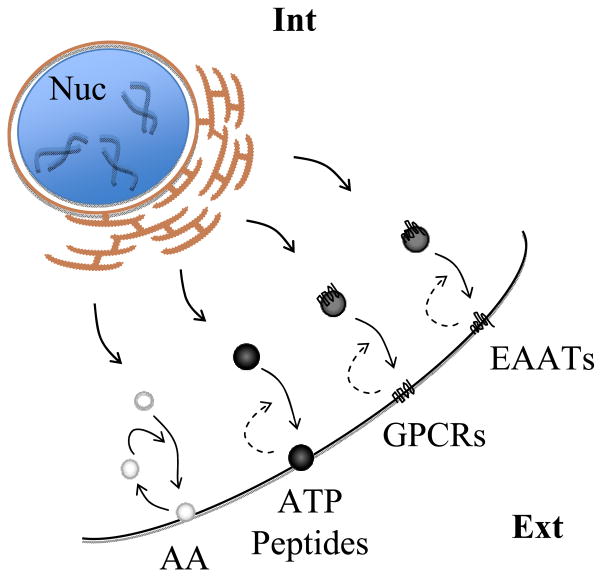Figure 1.
Regulated exocytosis in astrocytes. Ca2+-dependent exocytosis is a mechanism underlying the release of three classes of gliotransmitters: amino acids (AA), nucleotides (e.g., ATP), and peptides from astrocytes. These chemical transmitters are stored in and released from at least two distinct classes of vesicles (clear and dense core) at the plasma membrane. Secretory vesicles can also carry membrane-associated molecules. Delivery of membrane signaling receptors, such as the G-protein coupled receptors (GPCRs) and transporters, such as the excitatory amino acid transporters (EAATs) to the plasma membrane is of special interest for astrocytic interactions with other neural cells. Arrows indicate direction of vesicle trafficking. Dashed arrow indicates the presumed recycling of ATP/peptide, GPCR, and EAAT containing vesicles. Ext, extracellular space; Int, intracellular space; Nuc, nucleus. Drawing is not to scale.

